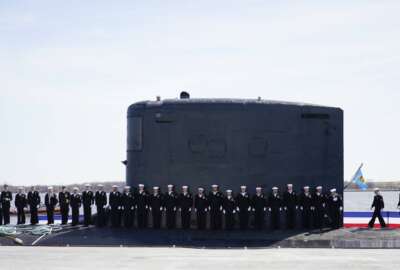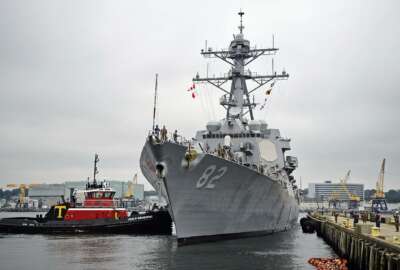Fleet Forces developing new readiness plan with potential conflicts in mind
The Navy’s new Global Maritime Response Plan will serve as a contingency strategy and allow the service to quickly mobilize its available forces should a conf...
For over a decade, the Navy has primarily relied on its Optimized Fleet Response Plan to deploy ready naval forces. The framework, however, is mostly designed to support peacetime rotations and is not suited for a global conflict, officials say.
A new major effort — the Global Maritime Response Plan — will address those challenges and provide a comprehensive strategy for quickly mobilizing available forces should a conflict ensue.
“The Global Maritime Response Plan is a separate effort that basically looks at our Navy and says, ‘What can we do if I need to transition to a warfighting footing more quickly? What is it I can deliver to the forward commanders in a more real-time sense? What do I need to do in the continental United States to support that effort?” Adm. Daryl Caudle told reporters on Tuesday before his remarks at this year’s Surface Navy Association’s symposium.
“What does the reserve component need to give us in the different places to bolster that? What are some of the things that I can devolve and stop doing and take those folks, move them to areas where they can be better utilized?” he added.
Caudle said that given this “massive” undertaking, they will need to rethink the service’s structure. In the coming months, they will be exploring the idea of streamlining some processes by shutting down some organizations while boosting others.
“What that might look like would be places where I have duplicative leadership structures, like submarine squadrons could be an example in Norfolk. I have Submarine Squadron Six and Submarine Squadron Eight. And in more time, would it be possible to put the submarines and those two squadrons under one submarine squadron and then harvest those leaders and have them come to headquarters?” Caudle said. “What’s the best utilization of our people? This is all very nascent and kind of pre-decisional.”
The new plan is based on the premise that out of 300 ships that are part of the Navy’s fleet, 100 are usually deployed worldwide, and another 100 ships are not available for immediate deployment due to maintenance.
The strategy will establish protocols to allow the service to mobilize its remaining 100 ships quickly in case of a conflict.
“That’s the 100 I want to be able to mobilize in the most effective way I can,” Caudle said.
The effort came from a war game where Caudle’s team looked at how to deploy and sustain its forces during a prolonged conflict. The first revision of the plan will most likely be delivered by the end of 2024.
“I’ll have a solid revision by the end of the year. That’s a guess,” Caudle said.
Fleet Forces Command plans to leverage a lot of the existing work and efforts being done by other organizations.
For example, the submarine force already has a response plan in place where each boat that is operational and not deep into maintenance is presumed to be ready for deployment.
The surface navy is also developing a similar response plan, which is still in its early stages.
At the same time, the Navy Reserve will play a crucial role in this process, and reservists are working with Caudle’s team on a comprehensive response plan that will allow them to allocate reserve personnel to the commands that need it most.
“They have a massive role in these several muscles working very closely to give me the reserve component response plan on how they are going to flow reserve folks to me, so that we target those people and sailors and leaders to the right commands that need that best,” Caudle said.
Copyright © 2024 Federal News Network. All rights reserved. This website is not intended for users located within the European Economic Area.






